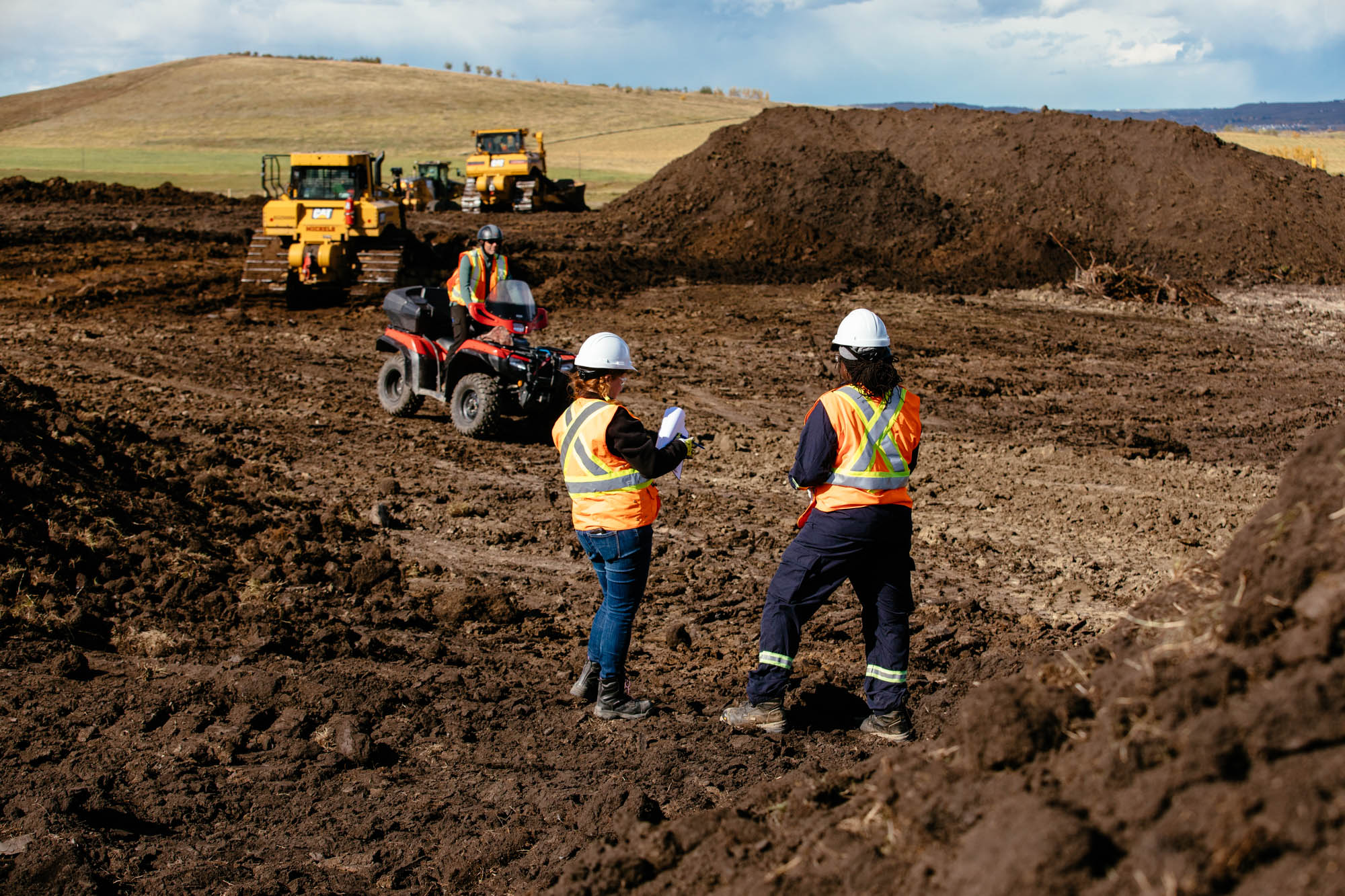CER’s Economic Regulation of Pipelines
The Canada Energy Regulator (CER) regulates various economic aspects of pipelines under its jurisdiction, including tolls and tariffs, requirements for companies to have access to financial resources to cover potential costs of unintended or uncontrolled releases, and saving funds for future abandonment costs. The “About the CER” section of this report provides a more detailed overview of the CER’s mandate.

Since it can be more cost effective to build one pipeline rather than many competing pipelines, facilities under CER jurisdiction often have market power and in some instances, operate as monopolies in the markets they serve. The CER’s role is to ensure that where market power exists, it is not abused and that tolls for pipeline services are just and reasonable, and non-discriminatory.
Overview of Tolls and Tariffs
The CER regulates the tolls (the price charged for service) and tariffs (the terms and conditions of service) of pipeline companies under its jurisdiction, to ensure that tolls are just and reasonable, and that there is no unjust discrimination in tolls or services.
The CER closely monitors how pipeline companies comply with regulatory requirements and whether they are providing services to shippers at reasonable prices (tolls). The CER monitors compliance in a variety of ways, including by: requiring regular compliance filings by companies, auditing finances, and soliciting shipper feedback via surveys.Footnote 53 Parties may also file formal complaints with the CER if they are unable to resolve concerns on specific toll and tariff matters.
Pipeline companies regulated by the CER are divided into two groups for financial regulatory purposes:
- Group 1 companies are pipeline companies with extensive systems and several third-party shippers.
- Group 2 companies consist of all other pipeline companies which operate smaller, less complex pipelines with fewer or no third-party shippers.
As of June 2021, the CER currently regulates 13 Group 1 companies and 84 Group 2 companies.
The CER uses a complaint-based approach to regulate the tolls and tariffs of Group 2 companies and of two of the Group 1 oil pipelines.Footnote 54 Under the complaint-based regulation approach, the pipeline company is responsible for providing shippers and other interested persons with enough information to determine whether the tolls are reasonable. Shippers or other parties who cannot resolve a concern with the pipeline company may file a complaint with the CER. If a complaint is filed, the CER may establish a process to examine the tolls and tariffs. If no complaint is filed, the Commission will operate under the assumption that the tolls are just and reasonable.
A pipeline company cannot charge a toll unless it is included in a tariff filed with the Commission or is approved by a Commission order. A tariff may include terms and conditions about a shipper's access to the pipeline, as well as the rights and responsibilities of both the pipeline company and the shipper once service begins.
When setting tolls for the Group 1 companies, the CER typically follows one of two processes. The first is to assess a detailed tolls application filed by the company. The second is to consider a negotiated toll settlement reached between the pipeline company, its shippers, and other stakeholders according to the Revised Guidelines for Negotiated Settlements of Traffic, Tolls, and Tariffs (Settlement Guidelines), dated 12 June 2002.
Negotiated Settlements and Toll Proceedings
As an alternative to toll hearings, since the mid-1980s the CER and its predecessor the NEB have supported the use of negotiated settlements to improve the effectiveness and efficiency of the regulatory process. A negotiated settlement is an agreement between a pipeline company and its stakeholders regarding issues related to the company’s revenue requirementFootnote 55, tolls, tariffs, and/or operational matters. Negotiated settlements can cover all, or certain elements of, a pipeline’s tolls, traffic, or tariffs. Generally, negotiated settlements address a pipeline’s toll design, revenue requirement, or both.
The Settlement Guidelines establish acceptable criteria for the settlement process. Generally, the CER wants to ensure all interested parties have a fair opportunity to participate in the settlement process and that there is a general acceptance of the outcome.
Applications that satisfy the criteria of the Settlement Guidelines and are approved according to this process are considered negotiated settlements, as outlined in the Settlement Guidelines. Detailed tolls applications can often involve substantial negotiated components; however, these applications are assessed as detailed tolls applications, and as such are distinct from the negotiated settlements outlined in the Settlement Guidelines.
The settlement timelines below illustrate both negotiated settlements approved pursuant to the Settlement Guidelines, as well as applications with substantial negotiated components approved under the detailed tolls application assessment process.
Oil Pipeline Settlements
Many settlements on oil pipelines have been in place for multiple years, as shown in Figure 26a. Some include explicit termination dates, such as Trans Mountain Pipeline ULC (Trans Mountain)’s 2019-2021 Incentive Toll Settlement. Others have provisions for the settlement to continue indefinitely, such as Trans-Northern Pipelines Inc. (TNPI)’s Incentive Toll Settlement.
The current negotiated Competitive Toll Settlement for the Enbridge Canadian Mainline expires on 1 July 2021, and Enbridge Pipelines Inc. submitted an Application that is currently before the Commission for a new service and tolling framework for the Enbridge Canadian Mainline.
Source and Description
Source: CER
Description: This figure represents the settlements timeline for several CER-regulated Group 1 oil companies. Between 1995 and 2010 many existing and new pipelines entered into negotiated settlements.
Gas Pipeline Negotiated Settlements
Some gas pipelines operate according to multiple concurrent settlements, which address different aspects of the pipeline’s tolls, traffic, or tariffs. Figure 26b shows current and historic settlements on gas pipelines. New negotiated settlements reached in recent years include NOVA Gas Transmission Ltd. (NGTL)’s 2020-2024 Revenue Requirement Settlement concerning revenue requirement, NGTL Rates and Services Settlement on the NGTL System concerning rate design methodology, and TransCanada PipeLines Limited (TCPL)’s new Mainline 2021-2026 Settlement for the TC Canadian Mainline, addressing tolls and services. Settlements have continued to play a large role in resolving toll and tariff issues on gas pipelines over the last five years.
Source and Description
Source: CER
Description: This figure represents the settlements timeline for major CER-regulated gas companies. Between 1995 and 2010 many existing pipelines and newly constructed pipelines entered into negotiated settlements. In 2020 almost all Group 1 natural gas pipelines (except the Alliance Pipeline and the Foothills System) were using toll settlements.
Toll Indices
A toll is the price charged by a pipeline company for transportation and other services. Tolls allow pipeline companies to safely operate and maintain pipelines. Tolls also provide funds for companies to recover capital (the money used to build the pipeline), pay debts, and provide a return to investors. Stable and reasonable tolls are a key concern for shippers and are therefore one of the indicators of the efficiency of a transportation system.
Often, lower throughput leads to higher tolls because a pipeline’s costs are shared across all throughput moving on the system. Large expenditures such as expansions can change tolls depending on the impacts on throughput and revenue from cost-of-service regulation.
Oil Pipelines Toll Index
This section reviews toll trends since 2015 on CER-regulated oil pipelines. Benchmark tollsFootnote 56 for major Group 1 oil pipelines, as well as the gross domestic product (GDP) deflatorFootnote 57 normalized to 2015, are shown in Figure 27a. Pipeline tolls vary for several reasons, such as changes in throughput, operating costs, and capital costs. The benchmark tolls for the Enbridge Canadian Mainline were above the GDP deflator throughout the time period. The benchmark tolls for the Keystone Pipeline and the Express Pipeline exhibited changes similar to changes to the GDP deflator over the same time period. The Trans Mountain Pipeline’s benchmark tolls also exhibited similar changes to the GDP deflator, and were below the GDP deflator in 2020. The Trans-Northern Pipeline’s benchmark tolls from 2015 to 2019, on the other hand, notably increased due to declining throughputs and increased spending on pipeline integrity.
Source and Description
Source: CER
Description: This chart presents CER-regulated oil pipeline benchmark tolls for selected pipelines, compared with the GDP deflator.
Gas Pipelines Toll Index
This section reviews toll trends since 2015 on CER-regulated gas pipelines. The benchmark tolls for major Group 1 natural gas pipelinesFootnote 58 as well as the normalized GDP deflator are shown in Figure 27b.
Source and Description
Source: CER
Description: This chart presents CER-regulated gas pipeline benchmark tolls for selected pipelines, compared with the GDP deflator.
After tolls for firm service steadily increased under the Alliance Pipeline’s original framework, tolls under its new services offering have remained stable and have fallen below the GDP deflator from 2015 to 2020. The Enbridge BC Pipeline’s tolls increased more than the GDP deflator, largely from significant capital expenditures over the 2015-2020 period. New fixed-toll services were introduced on the TC Canadian Mainline to increase use of the pipeline, which has helped decrease cost-of-service tolls for its shippers.
Over recent years, the Maritimes & Northeast Pipeline Management Ltd. (M&NP) Pipeline has transitioned from being driven by supply, to driven by domestic consumption, due to offshore Nova Scotia production declining to a complete shutdown, causing M&NP Pipeline tolls to rise. In the current 2020-2021 Settlement for the M&NP Pipeline, M&NP outlined its unique challenge of losing its domestic gas supply, as well as 95% of its firm contract determinants all at once. M&NP’s 2017-2019 Settlement on the M&NP Pipeline included accelerated depreciation to prepare M&NP for the transition from a supply-driven pipeline to one solely supplying domestic markets.
Financial Resource Requirements
The Canadian Energy Regulator Act (CER Act) requires companies operating oil and gas pipelines to set aside financial resources to cover the costs of any unintended or uncontrolled release from a pipeline, such as a spill. The financial resources sections of the CER ActFootnote 59 reinforce the “polluter pays” principle.

Companies are required to maintain financial resources that, at a minimum, match the absolute liability limit applicable to the company under the CER Act. A portion of these financial resources must be readily accessible to the company. The Pipeline Financial Requirements Regulations (FR Regulations), which came into force in July 2019, outline the specific types of financial instruments that the Commission may order companies to maintain, as well as the minimum portion of the financial resources required to be readily accessible to the company.
Companies are required to submit a Financial Resources Plan to the CER, detailing how their financial resources meet the requirements of the CER Act and the FR Regulations. This includes the types and amounts of financial resources available to the company, as well as the timing of access for each financial resource type utilized. Each company must report annually to the CER and notify the Commission in writing of any material revisions to its financial resources or its Financial Resources Plan.Footnote 60
Absolute Liability
Absolute liability means that a pipeline operator is liable for any unintended or uncontrolled release up to its defined absolute liability limit, regardless of whether there is proof of the operator’s fault or negligence. However, if a court determines that a pipeline operator’s fault or negligence causes a spill or unintended release, the pipeline operator must pay the full costFootnote 61 to clean up and remediate the spill, even if the cost exceeds the pipeline company's absolute liability limit.
Major oil pipelines, defined as pipeline-operating companies that individually, or in the aggregate, have the capacity to transport at least 250 000 barrels of oil per day, are subject to an absolute liability limit of $1 billion, as set out in the CER Act. All other oil, gas, and commodity pipeline companies are subject to specific absolute liability limits, as set out in the FR Regulations.
The absolute liability limit is determined based on various criteria, including commodity types transported, which place companies into certain classes. The absolute liability for oil and gas pipeline companies are set out as follows:
- Oil pipeline companies’ absolute liability is based on individual or aggregate transportation capacity in barrels per day. Oil pipeline companies have three classes with limits ranging from $200 million to $1 billion.
- Gas pipeline companies’ absolute liability is based on risk value, which is calculated using the pipeline’s maximum outside diameter and its maximum operating pressure. If the company operates two or more gas pipelines, the risk value is that of the pipeline with the highest risk value. Gas pipeline companies have four classes with limits ranging from $10 million to $200 million.
All pipeline companies must maintain financial resources equal to their absolute liability, or a greater amount if determined by the Commission. See Table C.1 in Appendix C for a table of absolute liability limits and readily accessible resource levels for each company’s absolute liability class.
Figure 28 (first chart) shows the aggregate amount of financial resource requirements that must be maintained (at minimum) by company class. Oil pipeline companies in aggregate must maintain more financial resources than gas pipeline companies regulated by the CER.
Readily Accessible Resources
Oil and gas pipeline companies must maintain at least 5%Footnote 62 of their required level of financial resources in readily accessible forms (accessible within five business days). The Commission can direct companies to maintain certain types of readily accessible resources, including letters of credit, lines of credit, participation in pooled funds, and cash and/or cash equivalents. Other financial instrument types may be used to meet the non-readily accessible portion, such as insurance policies, parental company guarantees, and surety bonds.
See Table C.2 in Appendix C for a table of absolute liability and readily accessible resource levels required for each of the major CER-regulated pipeline companies.
Figure 28 (second chart) shows the types of financial resources maintained, indicating that insurance, followed by lines of credit and cash are the most frequently used financial instruments, while lines of credit and insurance have the highest aggregate value of all financial instruments used.
Source and Description
Source: CER Regulatory Filings (REGDOCS).
Description: The first chart in this figure shows the types of financial resources maintained, indicating that insurance, followed by lines of credit and cash are the most frequently used financial instruments, while lines of credit and insurance have the highest aggregate value of all financial instruments used.
The second chart in this figure shows the aggregate amount of financial resource requirements that must be maintained (at minimum) by company class. Oil Class 1, followed by Oil Class 2, then Gas Class 1 make up the top three company classes by aggregate amount of resources that must be maintained. Oil companies in aggregate must maintain more financial resources than gas companies regulated by the CER.
Abandonment Funding
When a company who owns a pipeline wants to, or must, permanently stop operating partFootnote 63 or all of it, the company must apply to the CER to abandon the pipeline. Abandonment can be done by removing the pipeline from the ground or by abandoning it in place, both of which require the right-of-wayFootnote 64 to be reclaimed and returned to a state comparable to its surroundings.

CER-regulated pipeline companies are liable for the costs of pipeline abandonment and since 2014 have been required to have a process and mechanism in place that will provide adequate funds to pay for future abandonment. Generally, abandonment costs are recovered by the pipeline company through tolls charged to its shippers over their pipeline’s operating life, similar to an individual person saving for retirement. Pipeline companies are required to provide the CER with an abandonment cost estimate for each CER-regulated facility they own and may choose to file a letter of credit or surety bond, or create a trust to fund their abandonment obligation. Companies using trusts set aside a certain amount of money each year into the trust, while companies using either a letter of credit or surety bond fund the entire obligation at once.
At the end of 2019, CER-regulated companies needed an estimated $10.4 billion dollars to cover future pipeline abandonment costs.Footnote 65 So far, over $2.3 billion has been set aside by these companies for abandonment funding, and the remainder will be set aside in future years as required, with CER oversight.
All companies are required to annually report abandonment funding information. Companies using trusts annually report information such as the amount contributed to trusts and earnings on investments in these trusts. All other companies report information including the status of facilities, and for those companies providing a financial instrument, the status of the letter of credit or surety bond. Regular updates are also required on the estimated amount of funds needed and set aside, especially as pipelines approach the end of their useful lives.
Source and Description
Source: CER Regulatory Filings (REGDOCS).
Description: The first chart illustrates total abandonment funding for both Group 1 and Group 2 companies. The second chart represents only Group 1 companies’ abandonment funding.
- Date modified:
